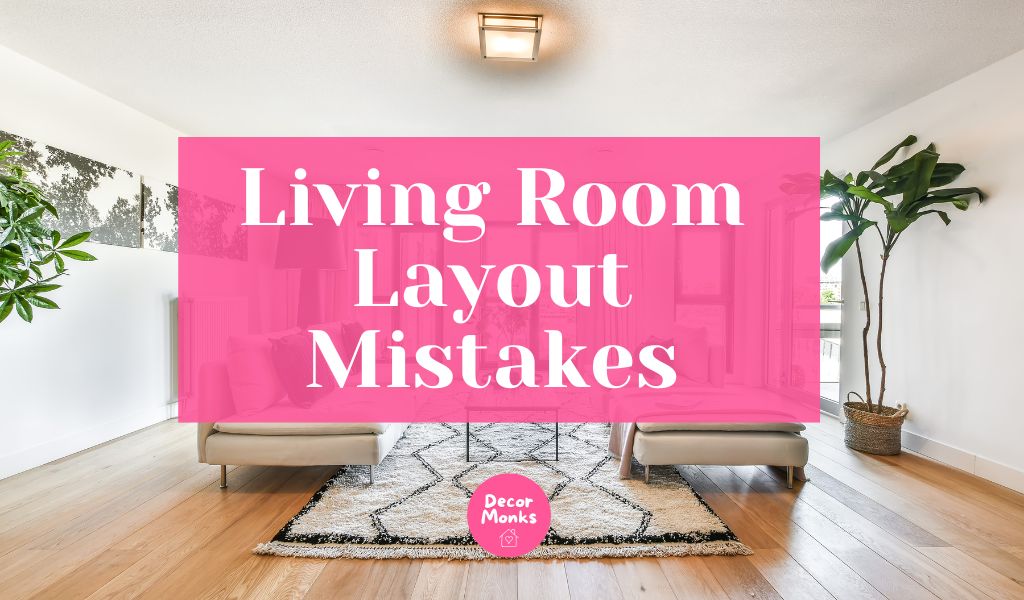A well-designed living room is essential for creating a space that feels inviting and functional. You might not realize it, but even small layout mistakes can have a significant impact on how cozy and welcoming your living area feels. Recognizing and correcting these common layout pitfalls can transform your living room into a space where you enjoy spending time with family and friends.
Simply rearranging your furniture or reassessing the placement of key elements can breathe new life into your home. Each layout choice contributes to the overall atmosphere and usability of your space, and it’s important to consider how each piece interacts with the others. Dive into these common living room layout mistakes and discover practical solutions that will enhance both beauty and functionality.
By being aware of these issues and knowing how to fix them, you can create a balanced and harmonious living room that reflects your personal style. Whether it’s the size of your area rug or the arrangement of your seating, small adjustments can lead to big changes in your everyday enjoyment of the space.
Living Room Layout Mistakes
Optimizing Furniture Placement
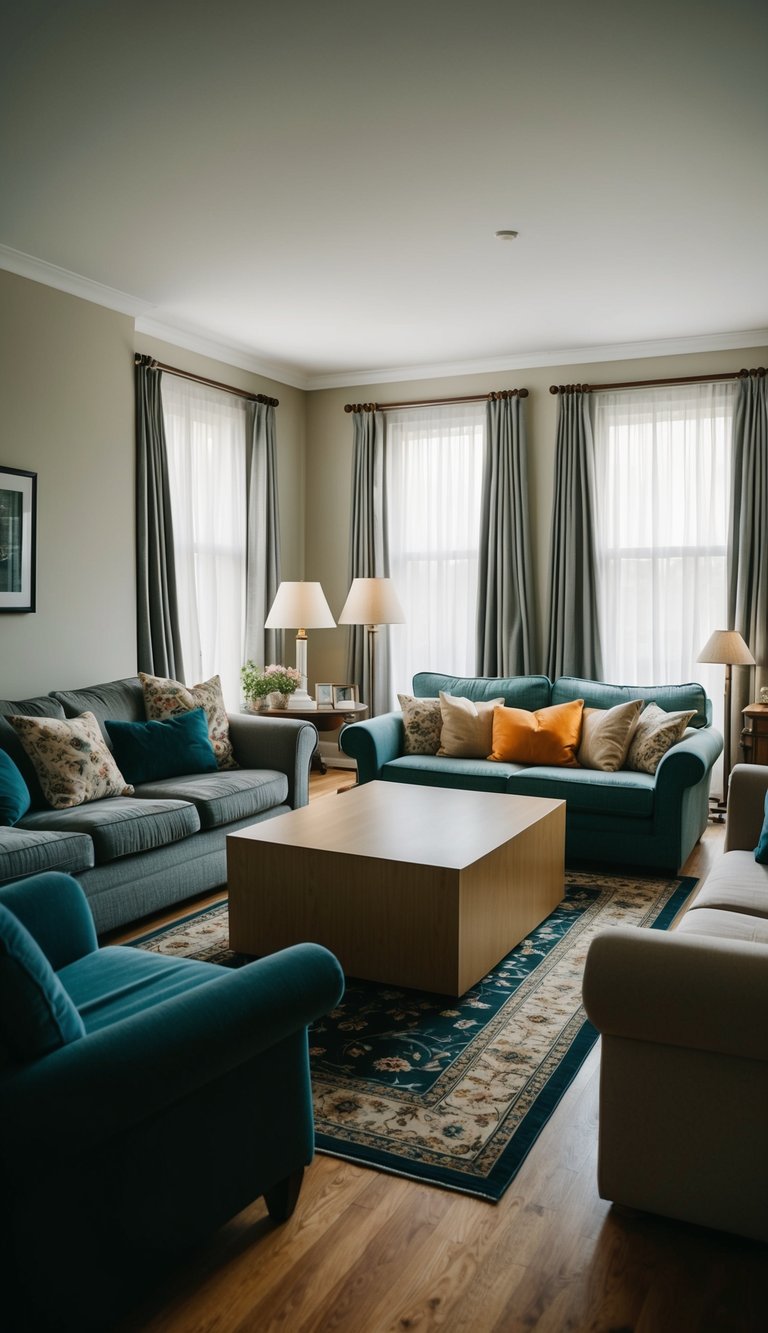
Arranging your furniture effectively can transform your living room. Here are some tips to help you get it right:
- Create a Focal Point: Decide what the room’s main feature will be, like a TV or a fireplace. Arrange your seating around this focal point for better flow and interaction.
- Avoid Pushing Furniture Against the Walls: While it may seem spacious, this can actually make the room feel disconnected. Instead, pull furniture inward to create a more intimate setting.
- Consider Traffic Flow: Make sure there are clear pathways for movement. Leave enough space between furniture pieces, ideally 18-30 inches, to ensure easy navigation.
- Use Area Rugs Wisely: An area rug should be large enough to include all furniture legs or at least the front legs. This anchors the seating area and provides warmth.
- Balance the Visual Weight: Distribute larger pieces evenly throughout the space. For example, pair a big sofa with a similarly sized accent chair to maintain balance.
- Incorporate Multi-functional Furniture: Pieces like ottomans or coffee tables with storage can help maximize space and reduce clutter. This keeps your living room functional and stylish.
By following these guidelines, you can create a living room layout that feels inviting and well-organized.
Balancing Spacing and Flow
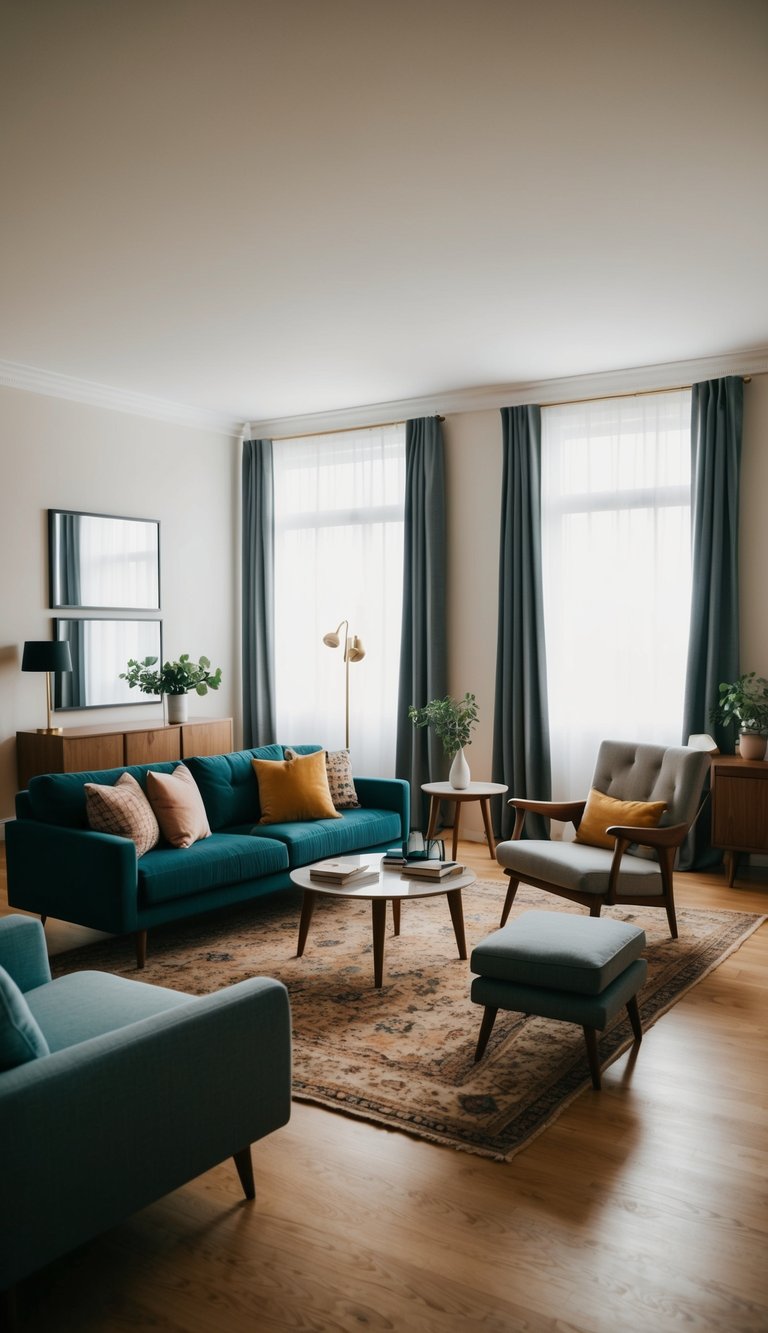
Creating a comfortable living space requires attention to spacing and flow. You want to ensure that your living room feels open while still being functional. Here are a few tips to help you achieve that balance.
1. Arrange furniture thoughtfully: Place seating in a way that encourages conversation. Avoid pushing all furniture against the walls. Instead, pull pieces inward to create an inviting atmosphere.
2. Assess traffic patterns: Identify the natural flow of movement in your room. Ensure there’s a clear path from one area to another. Aim for at least 24-30 inches of walking space between pieces.
3. Use area rugs wisely: A well-placed area rug can define spaces and enhance flow. Make sure it’s large enough to fit under the front legs of your furniture, tying the arrangement together.
4. Consider scale and proportion: Choose furniture that suits the size of your room. Oversized pieces in a small space can feel cramped, while smaller items in a large room may get lost.
5. Utilize vertical space: Adding shelves or art at varying heights can draw the eye upward, making your living room feel more expansive. Balance wall décor with furniture placement for a cohesive look.
Being mindful of spacing and flow transforms your living room into a harmonious and inviting space.
Choosing the Right Rug Size
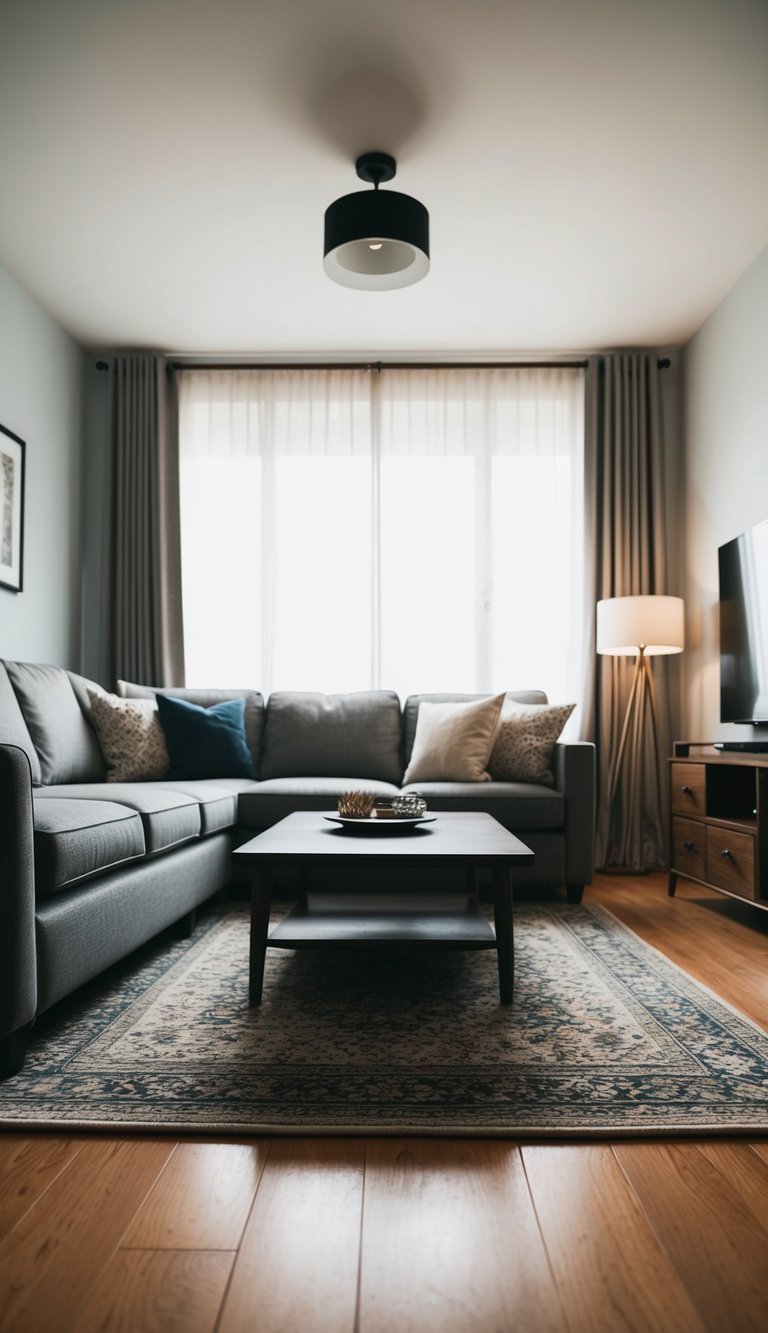
Choosing the right rug size is crucial for your living room’s look and feel. A well-sized rug can anchor your space and tie everything together. Here are some tips to help you choose wisely.
- Measure Your Space: Start by measuring your living room. This ensures you have an accurate idea of what will fit.
- Standard Sizes: Familiarize yourself with common rug sizes:
- 5′ x 8′ for smaller areas
- 8′ x 10′ for moderate spaces
- 9′ x 12′ for larger rooms
- Leave a Border: Aim for an 18-inch border around the rug for a balanced look. This helps define your seating area.
- Rug Placement: Consider how your furniture will sit on the rug. Ideally, at least the front legs of your furniture should rest on the rug.
- Shape Matters: Rugs come in various shapes like rectangular, round, and oval. Choose a shape that complements your room’s layout.
- Avoid Small Rugs: A small rug can make a room feel disconnected. Opt for a size that fits your furniture arrangement.
By considering these factors, you can select a rug that enhances your living room’s aesthetic and functionality.
Lighting Strategies for Ambiance and Function
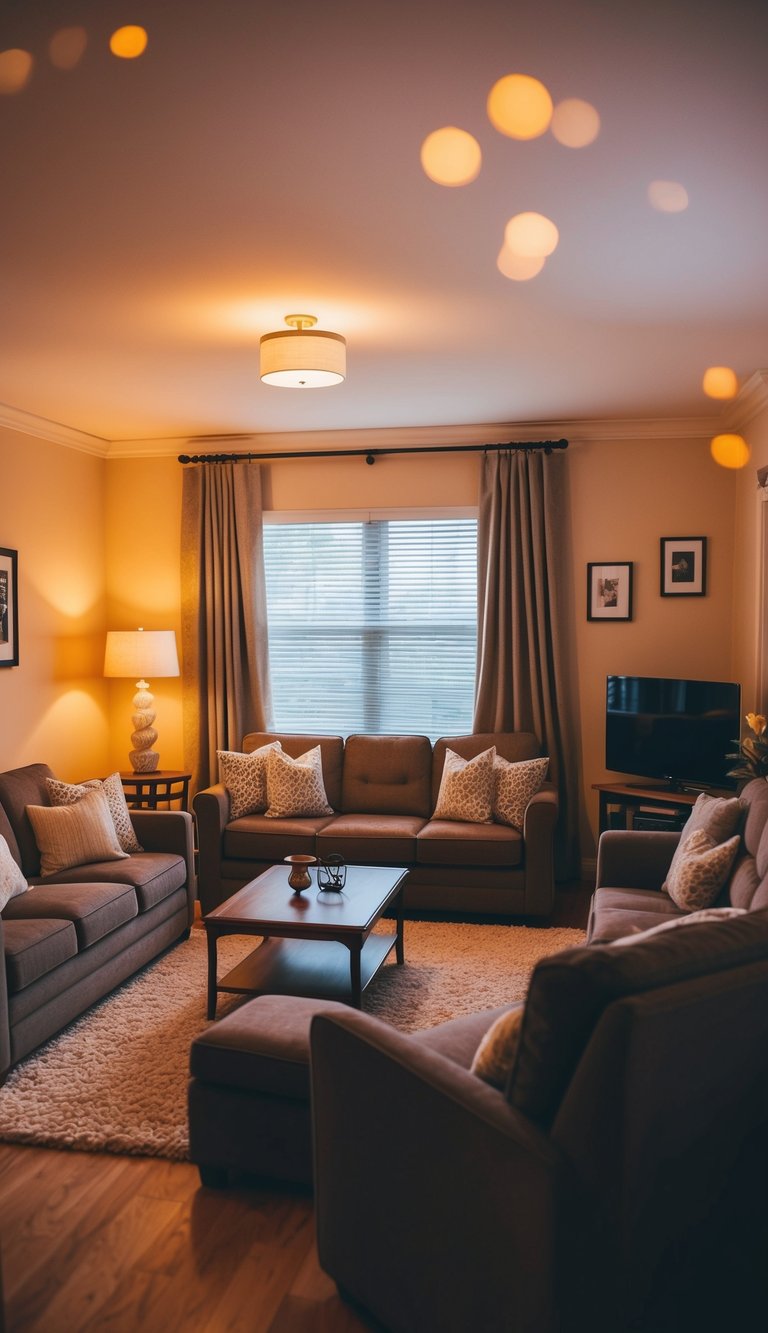
Creating the right lighting in your living room can enhance both ambiance and functionality. Here are some effective strategies to consider:
- Layer Your Lighting
Use a combination of ambient, task, and accent lighting. This layered approach will help you create a warm and inviting atmosphere. - Start with Ambient Lighting
Install ceiling fixtures or chandeliers to provide general illumination. Consider dimmable options to adjust brightness based on your needs. - Add Task Lighting
Use floor lamps or table lamps for reading and activities. Position these lights near seating areas to ensure functionality without straining your eyes. - Incorporate Accent Lighting
Highlight artwork or architectural features with wall sconces or spotlights. This adds visual interest and draws attention to your favorite aspects of the room. - Use Smart Bulbs
Invest in smart lighting to easily change colors and brightness. This adaptability allows you to tailor the mood based on different occasions. - Pay Attention to Color Temperature
Choose bulbs with a color temperature between 2700K and 3000K for a warm glow. Avoid overly cool or harsh lighting, which can create an unwelcoming atmosphere.
By implementing these strategies, you can achieve a well-lit living room that is both functional and inviting.
Color Coordination and Contrast
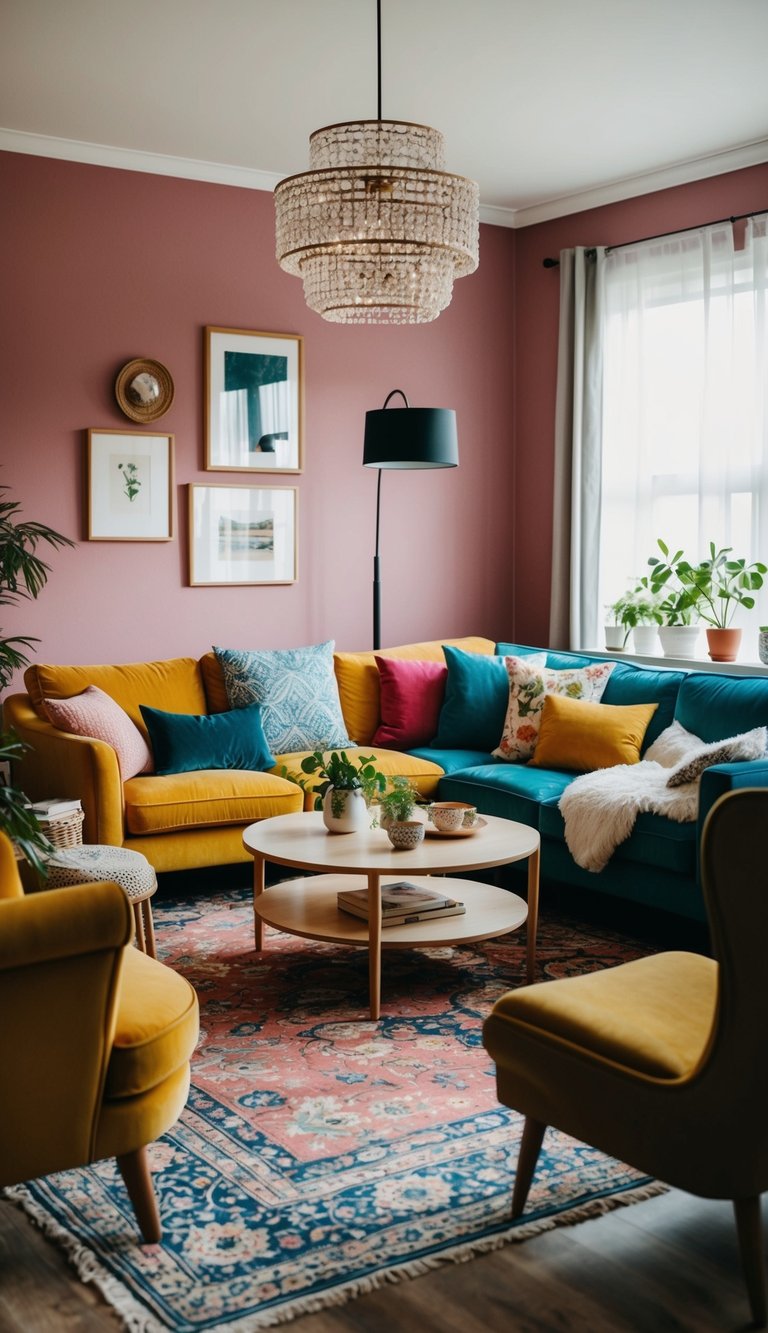
When it comes to your living room, color coordination plays a key role in creating a cohesive look. A good rule to follow is the 60-30-10 rule. This guideline suggests:
- 60% of the room should be a dominant color.
- 30% should be a secondary color.
- 10% should be an accent color.
Using this approach helps to ensure that no single color overwhelms the space.
Contrast is just as important. Having varied tones can add depth and interest. For example, if most of your room is painted in neutral shades, consider using vibrant accent pillows or artwork to create visual pop.
Here are some quick tips for effective color coordination:
- Choose a color palette that resonates with you.
- Incorporate different textures—this can enhance color without adding more hues.
- Use natural elements, such as plants, to introduce fresh colors and contrast.
Remember, contrast isn’t just about color; it’s also about the interplay of light and dark. Balancing these elements will make your living room feel inviting and harmonious.
Incorporating Personal Style with Functionality
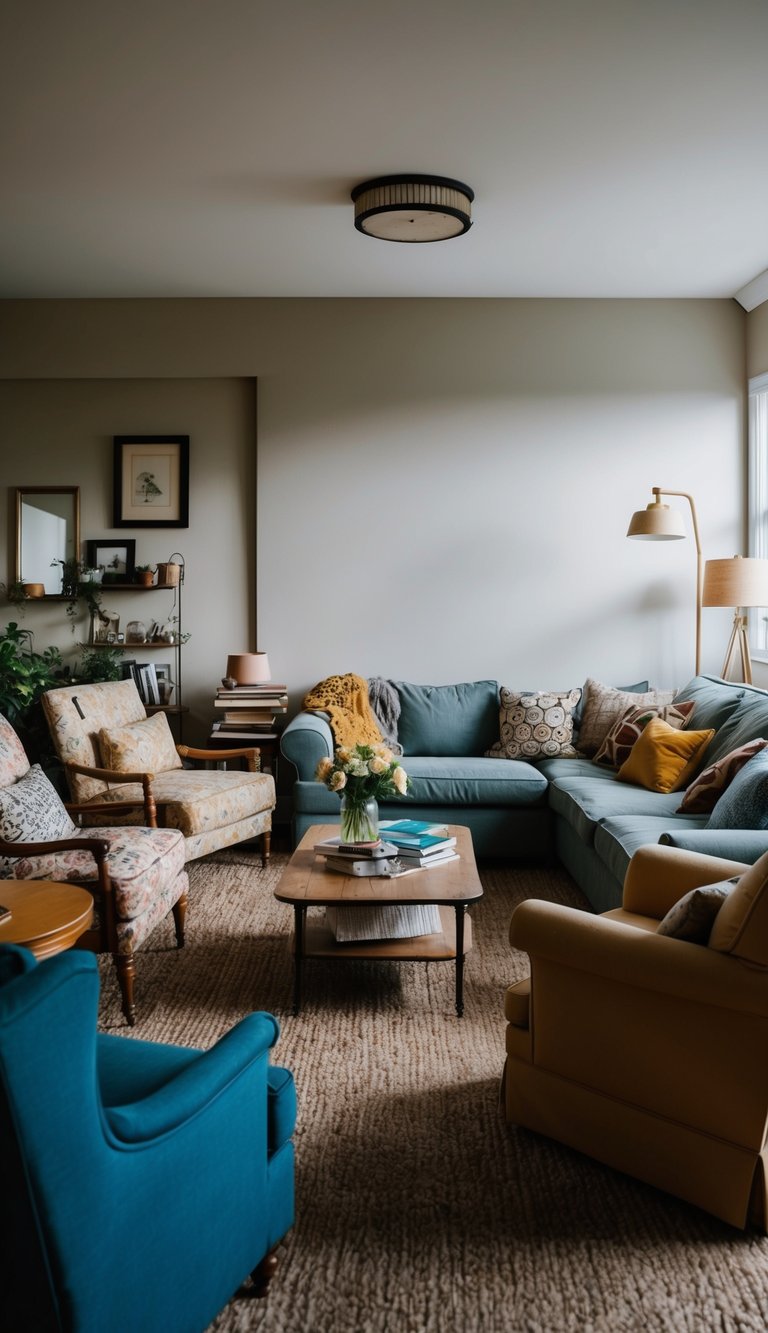
Creating a living room that reflects your personal style while ensuring it remains functional is essential for a welcoming space. Start by identifying your style preferences—whether modern, traditional, or eclectic.
Next, consider the layout. Arrange your furniture to enhance both aesthetics and usability. For example, ensure that the seating encourages conversation while still allowing for easy movement throughout the room.
Tips to Achieve Balance:
- Select Furniture Wisely: Choose pieces that align with your style and fit the scale of your space.
- Add Textiles: Incorporate patterned cushions or a vibrant throw to introduce color and texture without overwhelming the room.
- Display Personal Items: Showcase art, photos, or heirlooms on shelves or walls. This not only adds character but also makes the space uniquely yours.
Lighting Matters:
Layer your lighting to create ambiance. Use a mix of overhead lights, table lamps, and accent lights. This combination adds warmth and highlights your decor.
Keep It Functional:
Ensure that your living room can adapt to various activities. If you enjoy reading, include a comfy chair and good lighting. If entertaining is your thing, ensure there’s ample seating while keeping pathways clear.
By thoughtfully blending personal style with practicality, you can create a living room that feels like home.
Creating a Focal Point
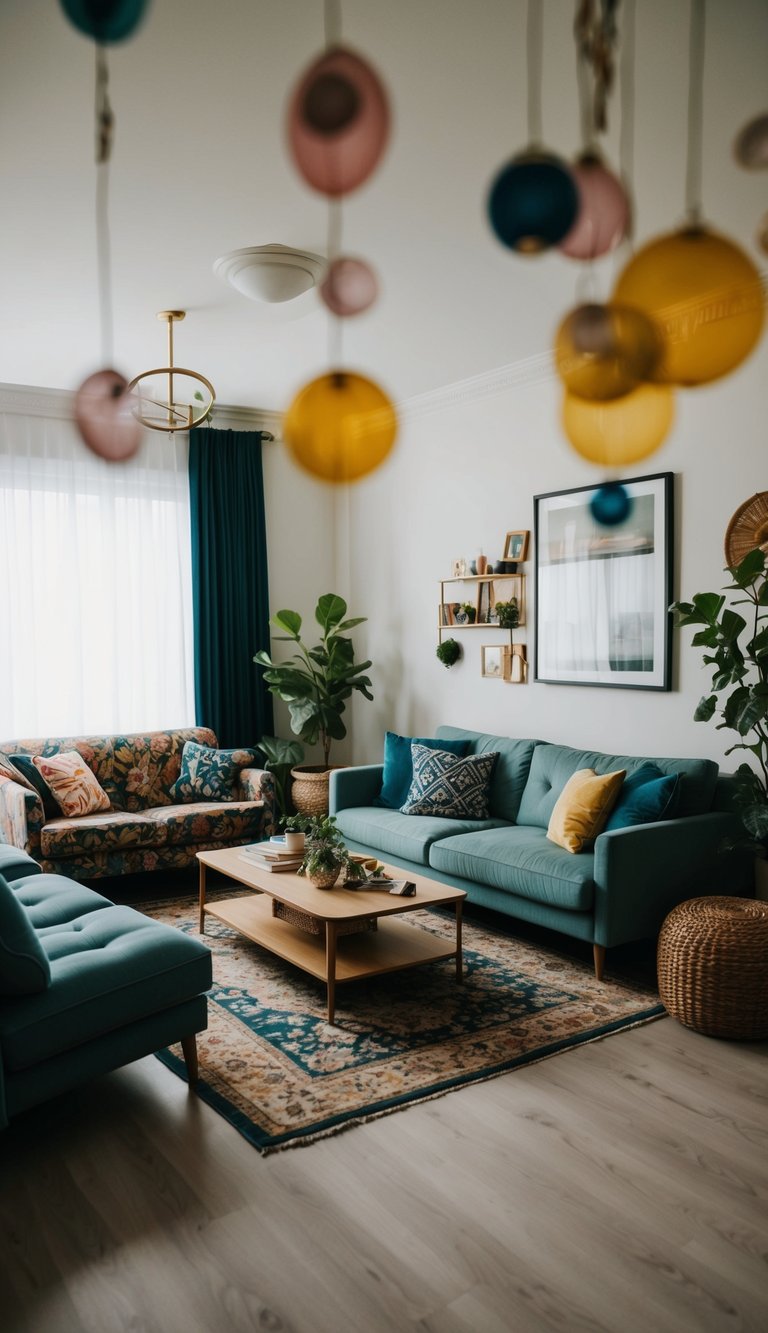
A focal point in your living room is essential for creating a visually appealing space. It serves as an anchor that draws your eye and can set the mood for the entire room.
Here are some tips to establish a strong focal point:
- Select a Feature: Choose a prominent element, such as a fireplace, large window, or an art piece to highlight.
- Use Furniture: Arrange seating around the focal feature to enhance its importance. For example, if you have a fireplace, position sofas and chairs to face it.
- Add Color & Texture: Use bold colors or textures on the focal point to make it stand out. A vibrant painting or a textured wallpaper can catch attention.
Consider these common focal points:
- Fireplace: A natural central point that invites warmth and comfort.
- Artwork: A large piece can create a stunning visual impact.
- TV: If your focus is on entertainment, position the TV in a way that it’s a convenient view from all seating areas.
By strategically choosing and arranging your focal point, you can make your living room feel cohesive and inviting.
Managing Clutter and Storage Solutions
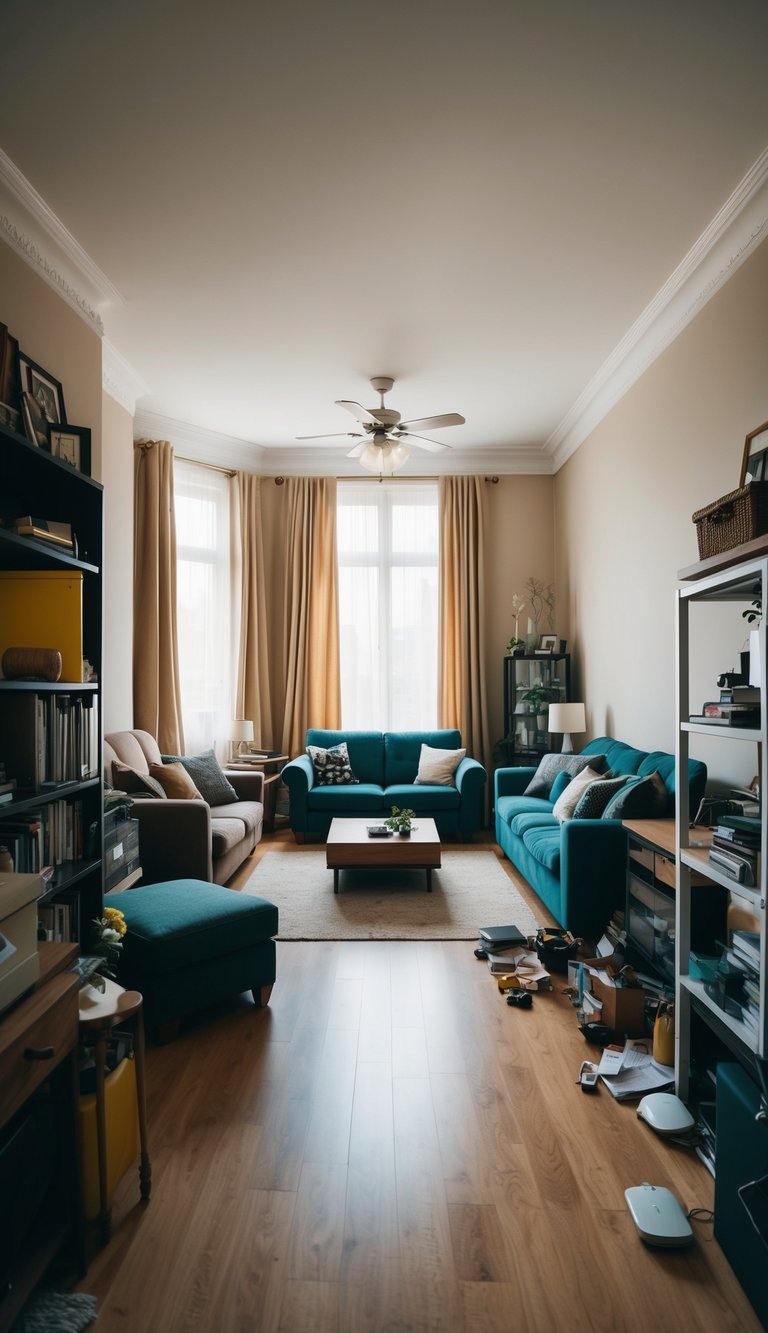
Managing clutter in your living room is essential for creating a welcoming space. Without a plan, it can quickly become chaotic. Here are some tips to help you stay organized.
Assess Your Needs
Before buying any storage solutions, take time to assess what you need. Consider the items that typically clutter your space. This will help you choose the right organizational products.
Use Stylish Storage
Opt for storage solutions that blend with your decor. Baskets, shelves, and cabinets can serve dual purposes. They keep items organized while adding aesthetic value to your room.
Create Zones
Designate specific areas for different activities. For example, a reading nook can have a small shelf for books. By creating zones, you reduce clutter and improve functionality.
Regularly Declutter
Schedule regular decluttering sessions. Set aside time monthly to evaluate items in your living room. This practice ensures that your space remains tidy and inviting.
Organize Clutter Wisely
Develop a system for organizing smaller items. Use drawer dividers or small containers to separate miscellaneous items. This simple adjustment can transform a cluttered drawer into a streamlined space.
Following these steps can help you manage clutter effectively and maintain a functional living room.
Selecting Appropriate Artwork and Decor
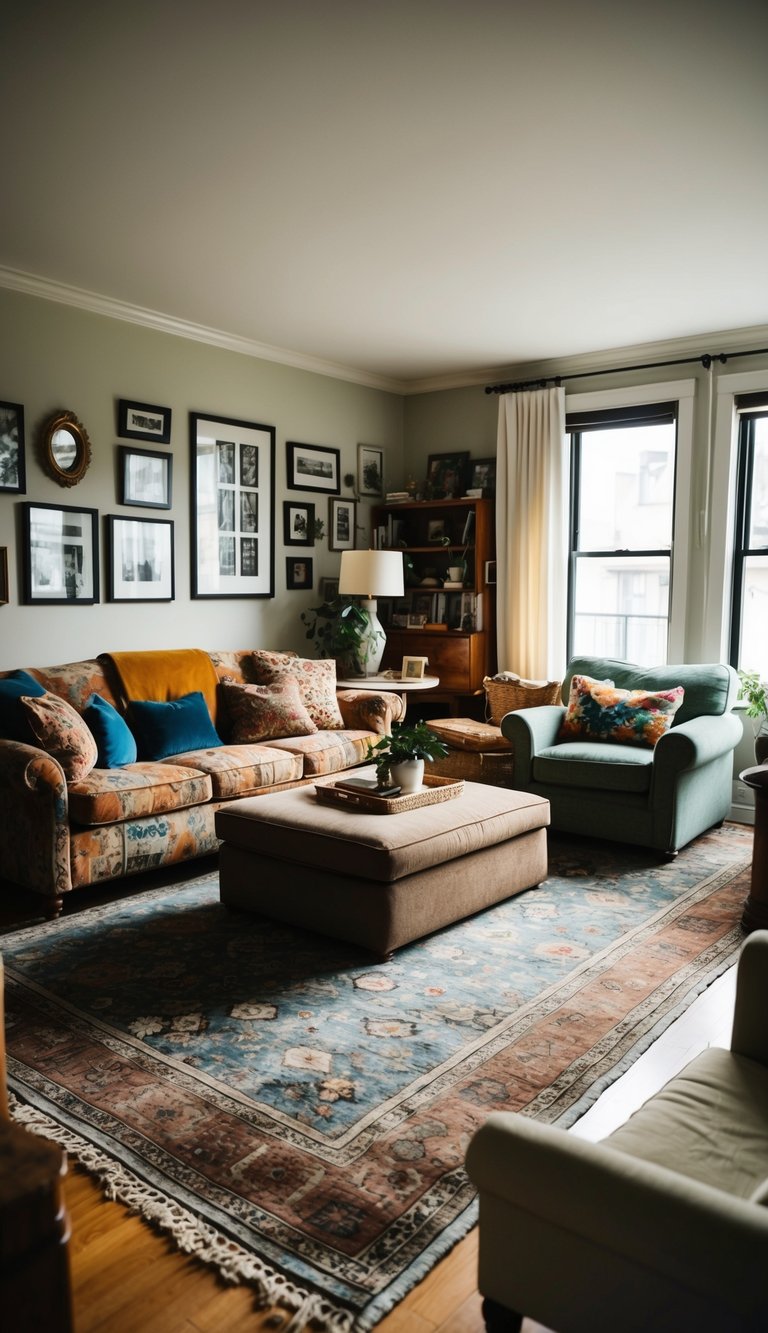
Choosing the right artwork and decor is key to enhancing your living room’s appeal. Here are some tips to help you make the best choices.
Match Your Style
Consider your overall decor style. Whether you prefer modern, rustic, or eclectic, ensure your artwork complements your furniture and color scheme.
Size Matters
Select artwork that fits the scale of your living room. Large pieces can serve as focal points, while smaller items work well in groups. Aim for a balanced arrangement.
Color Palette
Stick to a cohesive color palette. Choose pieces that include colors found in your room’s decor to create harmony. This approach will pull the room together seamlessly.
Personal Touch
Incorporate personal items, like family photos or travel souvenirs. This adds a unique flair and tells your story, making the space feel more inviting.
Layering
Consider layering your decor. Use shelves, tables, and walls to display art at varying heights. This creates visual interest and depth.
Textures and Materials
Mix different materials like metal, wood, and fabric. Combining textures adds richness to your space and keeps it visually engaging.
By following these guidelines, you can select artwork and decor that elevate your living room while staying true to your style.
Window Treatments for Style and Privacy
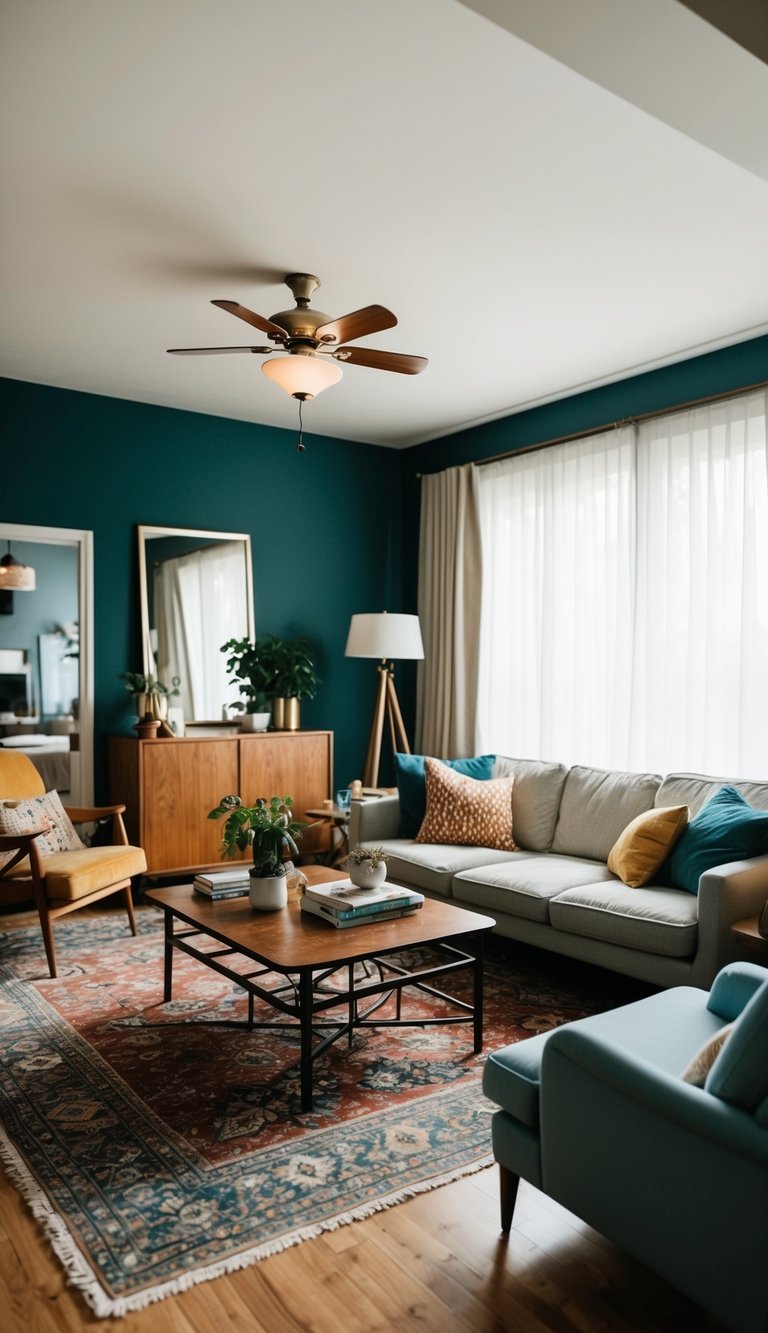
Choosing the right window treatments can enhance both the style and functionality of your living room. They serve to elevate the decor while providing essential privacy.
Consider these options:
- Curtains: Light, flowing curtains can add elegance. Choose fabrics that complement your color scheme.
- Blinds: These are practical and can be adjusted for light control. They come in various materials like wood or plastic.
- Shades: Roller shades or Roman shades offer a sleek, modern look. They can filter light and provide privacy.
When selecting treatments, think about how much natural light you want. Darker fabrics can create intimacy, while sheer materials keep the room bright.
Hanging Tips:
- Install treatments higher than the window frame to create the illusion of taller ceilings.
- Ensure they extend wider than the window to maximize light when open.
Don’t forget about layering! Combine sheer curtains with blackout shades for versatility. This ensures you can enjoy daylight when desired or have complete privacy.
With thoughtful choices, your window treatments can be a stylish addition to make your living room feel cozy and inviting.
Scale and Proportions
When arranging your living room, it’s essential to grasp the concepts of scale and proportion. These elements are crucial for creating a balanced and inviting space.
Scale refers to the size of furniture about the room. For example, oversized couches can overwhelm a small room, making it feel cramped. Aim for furniture that fits comfortably without dominating the area.
Proportion deals with the relationship between the sizes of different furniture pieces. For instance, a large sofa should pair well with appropriately sized chairs and tables. Mismatched proportions can make a room feel chaotic.
Here are some tips to maintain good scale and proportion:
- Measure Your Space: Before shopping, know your room’s dimensions. This helps you choose appropriately sized items.
- Use a Variety of Heights: Incorporate furniture of varying heights to create visual interest. Mixing low and high pieces adds depth to the design.
- Group Similar Pieces Together: Cluster furniture items of similar sizes. This helps establish a cohesive look.
Consider the architectural details of your living room too. A tall ceiling allows for larger pieces, while a cozier nook might benefit from smaller, intimate furniture arrangements.
By keeping scale and proportion in mind, you can enhance the overall aesthetic and functionality of your living room.
Innovative Living Room Technologies
Embracing new technologies can transform your living room into a modern oasis. Here are some innovative options to consider:
- Smart Lighting: Use smart bulbs that can be controlled via your smartphone. Adjust brightness and colors to set the perfect mood for any occasion.
- Voice Control Systems: Devices like Amazon Echo or Google Nest let you control music, lights, and even TVs with simple voice commands. This adds convenience and enhances your experience.
- Home Automation Hubs: Centralize control of all your smart devices. A hub can manage security, lighting, and entertainment systems, streamlining your daily routines.
You can also integrate smart seating. Some chairs and sofas come with built-in USB ports and wireless charging pads, perfect for staying connected.
Consider wireless charging tables. These allow you to charge devices without cluttering your living space with cables. It keeps your area neat and organized.
Lastly, explore high-definition projectors. They provide cinematic experiences at home without the need for a bulky TV. Hang a screen or use a blank wall for optimal effect.
These technologies not only enhance aesthetics but also improve functionality in your living room. Embrace these innovations to create a space that reflects your lifestyle.
Frequently Asked Questions
What is the ideal furniture arrangement for a small living room to maximize space?
In a small living room, consider using furniture that serves multiple purposes, such as ottomans with storage. Arrange seating in a way that promotes conversation, perhaps with a sofa opposite a couple of chairs. Keep larger pieces away from walls to create flow and avoid a cramped feel.
How can I create a focal point in my living room layout?
To create a focal point, choose one element to draw the eye, like a fireplace, a large piece of art, or a well-placed TV. Position your furniture to face this feature. This arrangement not only directs attention but also improves the room’s functionality and atmosphere.
How can I balance different seating options to create a harmonious look?
Balancing seating options involves mixing styles and sizes while maintaining a cohesive color palette. Use similar materials or colors for chairs and sofas, and ensure there’s enough space between pieces for movement. Aim for a mix of heights and shapes to create visual interest without overwhelming the space.

